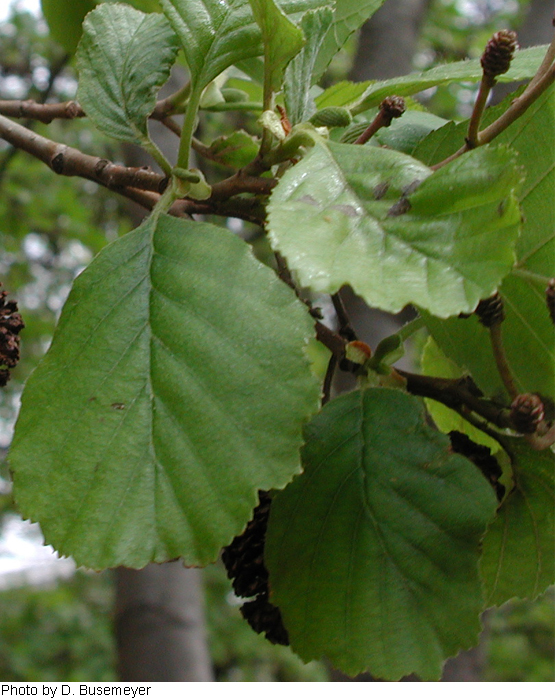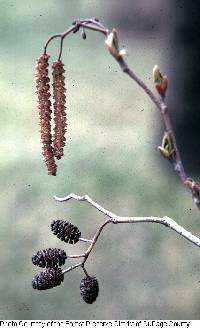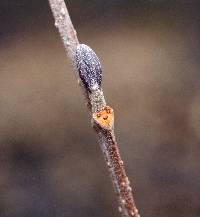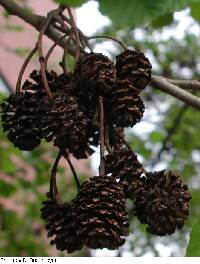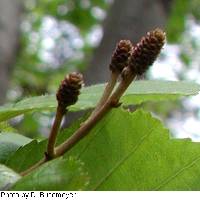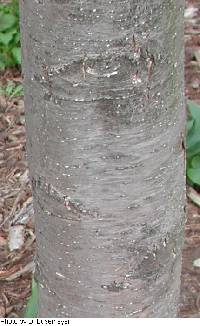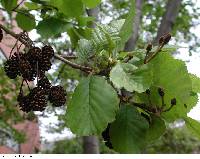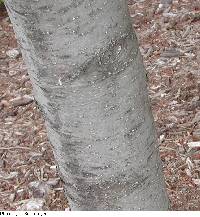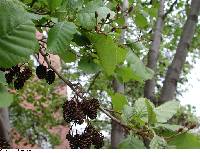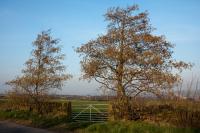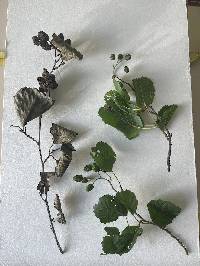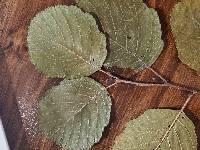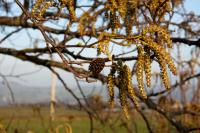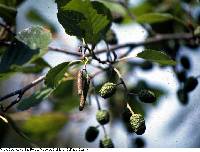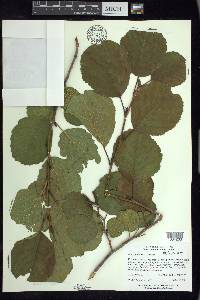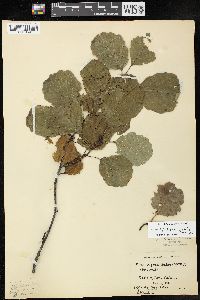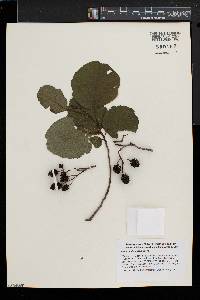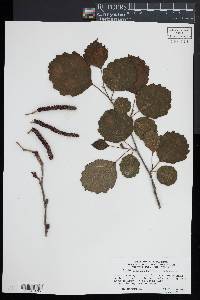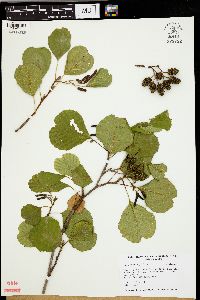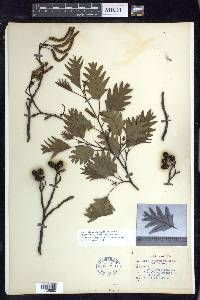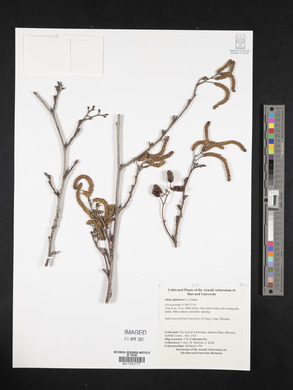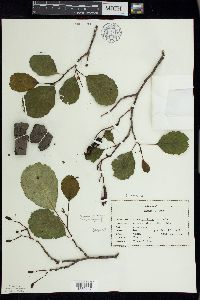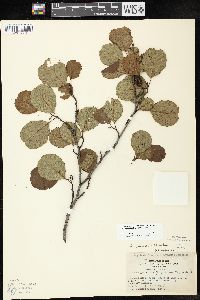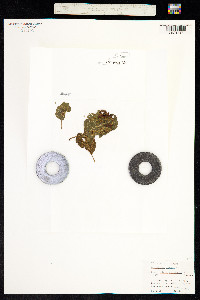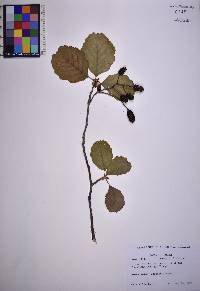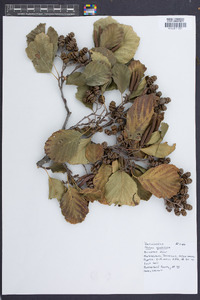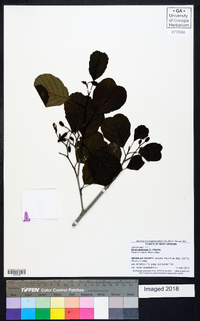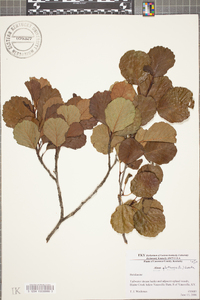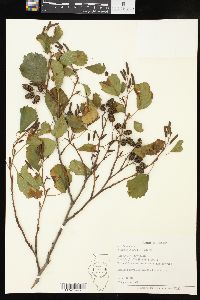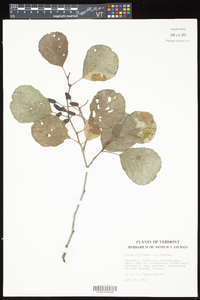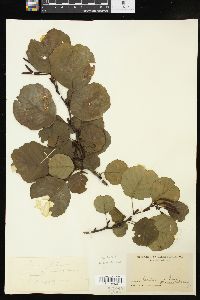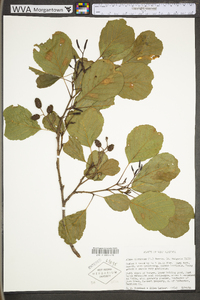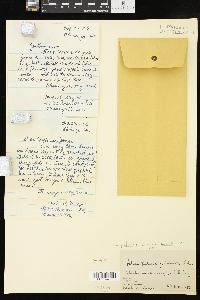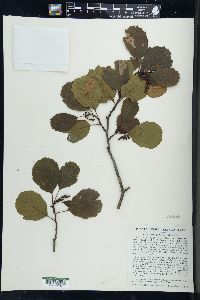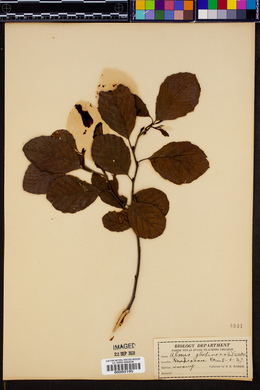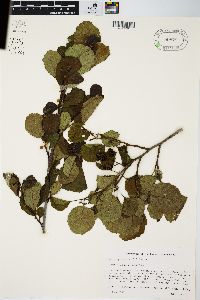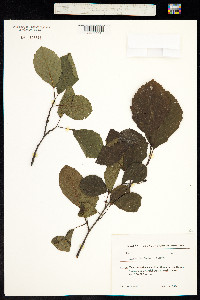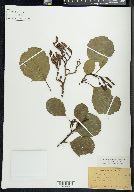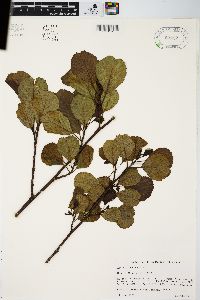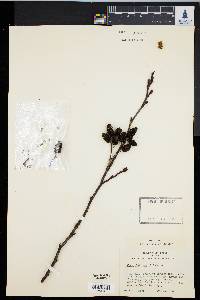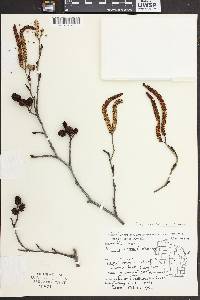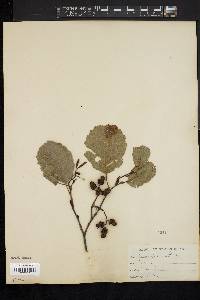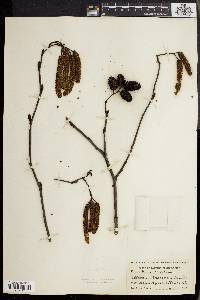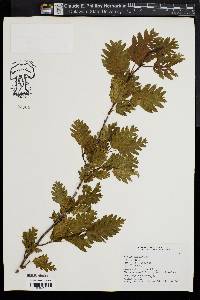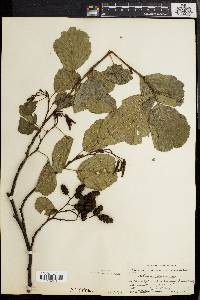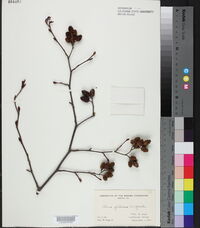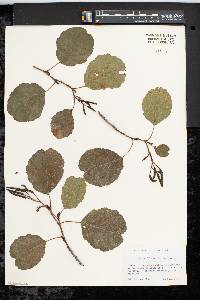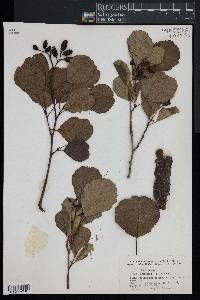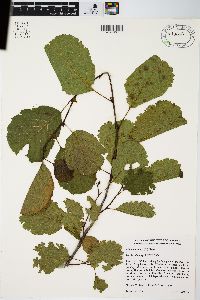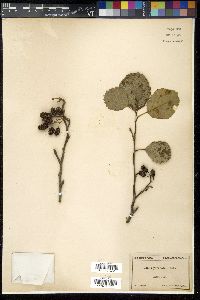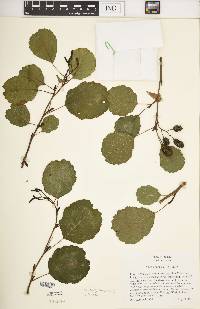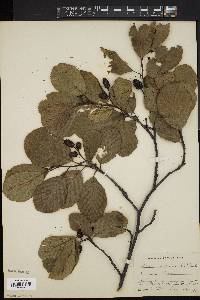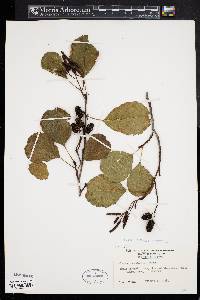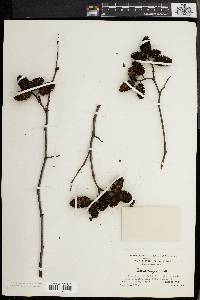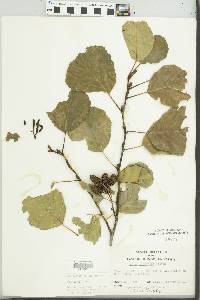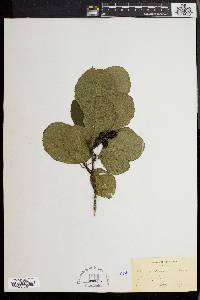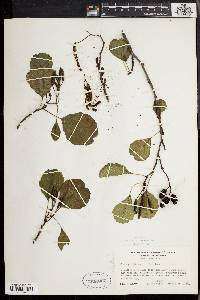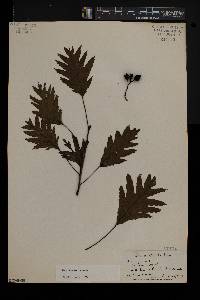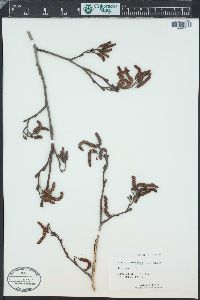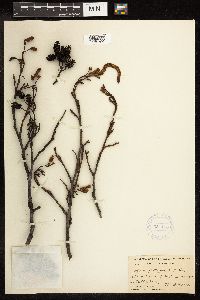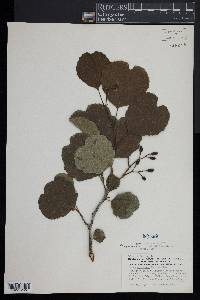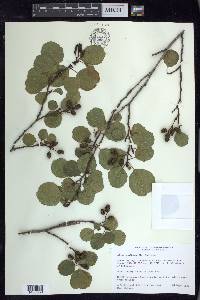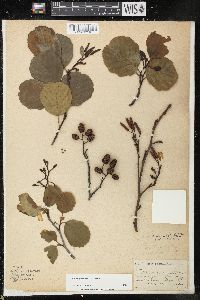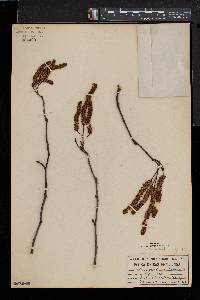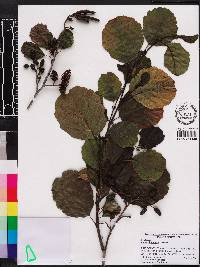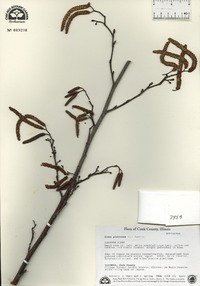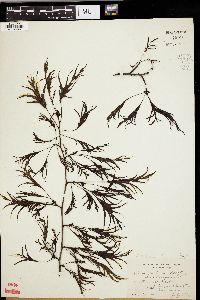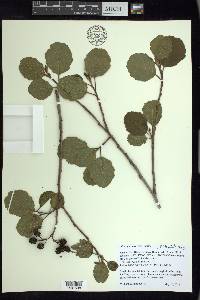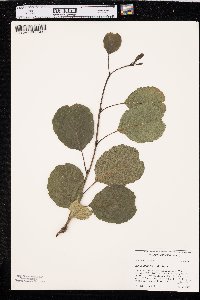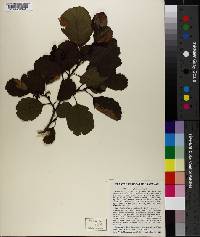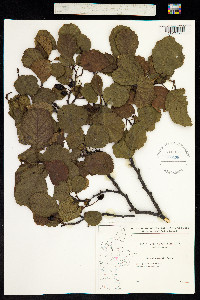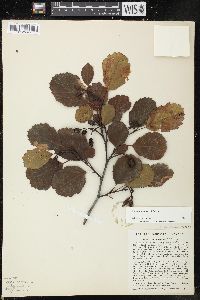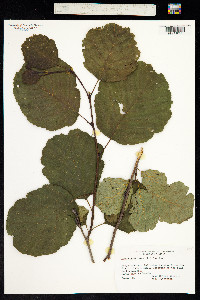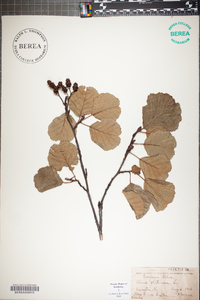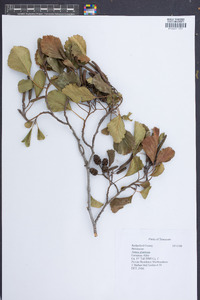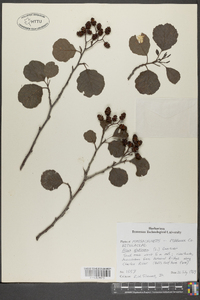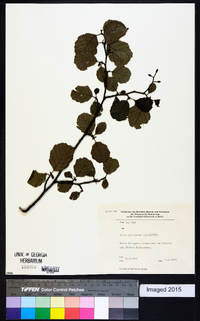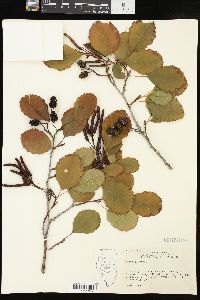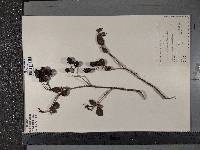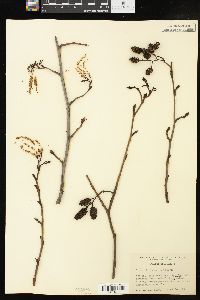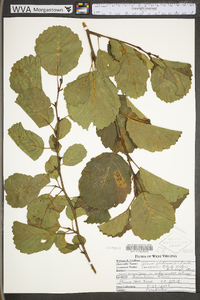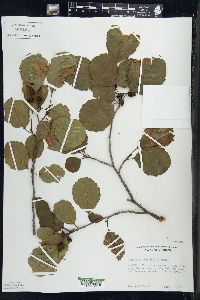
|
|
|
|
Family: Betulaceae
European Alder, more...black alder
[Alnus vulgaris Hill, opus utique oppr., moreBetula alnus var. glutinosa L., Betula glutinosa (L.) Lam.] |
Trees , to 20 m; trunks often several, crowns narrow. Bark dark brown, smooth, becoming darker and breaking into shallow fissures in age; lenticels pale, horizontal. Winter buds stipitate, ellipsoid to obovoid, 6--10 mm, apex obtuse; stalks 2--5 mm; scales 2--3, outer 2 equal, valvate, usually heavily resin-coated. Leaf blade obovate to nearly orbiculate, 3--9 × 3--8 cm, leathery, base obtuse to broadly cuneate, margins flat, coarsely and often irregularly doubly serrate to nearly dentate, major teeth acute to obtuse or rounded, apex often retuse or obcordate, or occasionally rounded; surfaces abaxially glabrous to sparsely pubescent, often more heavily on veins, both surfaces heavily resin-coated. Inflorescences formed season before flowering and exposed during winter; staminate catkins in 1 or more clusters of 2--5, 4--13 cm; pistillate catkins in 1 or more clusters of 2--5. Flowering before new growth in spring. Infructescences ovoid to nearly globose, 1.2--2.5 × 1--1.5 cm; peduncles 1--10(--20) mm. Samaras obovate, wings reduced to narrow, thickened ridges. 2 n = 28. Flowering early spring. Stream banks, moist flood plains, damp depressions, borders of wetlands; 0--200 m; Ont.; Conn., Ill., Ind., Iowa, Mass., Mich., Minn., N.J., N.Y., Ohio, Pa., R.I., Wis.; Europe. Alnus glutinosa is cultivated as an ornamental tree throughout eastern North America and is available in a variety of cultivars, including cut-leafed and compact-branching forms. This species has also been used extensively to control erosion and improve the soil on recently cleared or unstable substrates, such as sand dunes and mine spoils. It has escaped and become widely naturalized throughout the temperate Northeast, occasionally becoming a weedy pest. In Europe the black alder has served for many centuries as an important source of hardwood for timbers and carved items, including wooden shoes. Alnus glutinosa has been called A . vulgaris Hill in some older literature; that name was not validly published.
Tree 10 - 18 m tall, trunk 25 - 38 cm in diameter Leaves: alternate, stalked, 5 - 10 cm long and almost as wide, dark green above, paler beneath, oval to inversely egg-shaped or nearly circular with a rounded to slightly indented tip and a wedge-shaped to rounded base, coarsely toothed, finely toothed near base, sticky when young, with five to seven pairs of veins and sometimes with tufts of hairs in the vein axils. Fall color is lacking, but leaves hold onto trees late into fall. Flowers: either male or female, found on the same tree (monoecious), borne in catkins. Male catkins are borne in clusters of two to five, 4 - 13 cm long and purple in winter, 5 cm long and deep yellow in spring. Female catkins in short, upright clusters of two to five, dark purple changing to dark red when opening. Fruit: winged (samara), borne in a woody, cone-like cluster of scales (catkin) 1 - 2 cm long. Samaras are flattened with wings reduced to narrow ridges. Clusters of catkins are persistent. Bark: thin, purplish brown when young, becoming dark grayish brown and fissured into vertical or square plates. Twigs: green, changing to dark purple above, with raised, corky, orange spots (lenticels). The center of the cut twig (pith) is triangular. Buds: stalked, green changing to purple, 5 - 8 mm long, elliptical to inversely egg-shaped, sticky, with two or three scales that do not overlap (valvate). Terminal bud absent. Leaf scars: somewhat raised, with three bundle scars. Form: open, oblong to pointed, with branches ascending, but horizontal toward base. Similar species: Alnus glutinosa can be distinguished from other alders in the Chicago Region because it is always a tree, and its leaves have rounded to indented tips. Alnus incana ssp. rugosa and Alnus serrulata may be trees or shrubs and have leaves with pointed tips. Flowering: late March to late April Habitat and ecology: This species was introduced from Europe and has naturalized along rivers. It is commonly seen in old meandering areas of streams that have been dredged to make a new channel. In Europe, it grows in stream floodplains and wetlands. Occurence in the Chicago region: non-native Notes: This species is a commonly planted ornamental tree, but has become imvasive. Birds like crossbills and pine siskins eat the seeds, and the tree's roots have a symbiotic relationship with a nitrogen-fixing bacteria. In Europe, the wood is used for timbers and carving. Etymology: Alnus is the Latin name for an alder. Glutinosa comes from the Latin word for "gluey or sticky," referring to the buds and young leaves. Author: The Morton Arboretum Tree, with young parts very glutinous; lvs broadly oval to obovate or subrotund, broadly rounded above or retuse, broadly cuneate to rounded at base, finely serrate, with 5-8 principal veins on a side; fruiting catkins very glutinous, evidently pedunculate in axillary infls, 1.5-2.5 cm, 10-13 mm thick; frs elliptic or suborbicular, 2.5-3.5 mm, narrowly bordered; 2n=28. Native of Eurasia and n. Afr., planted especially along roadsides and occasionally escaped in our range. (A. alnus; A. vulgaris) Gleason, Henry A. & Cronquist, Arthur J. 1991. Manual of vascular plants of northeastern United States and adjacent Canada. lxxv + 910 pp. ©The New York Botanical Garden. All rights reserved. Used by permission. From Flora of Indiana (1940) by Charles C. Deam Indiana Coefficient of Conservatism: C = null, non-native Wetland Indicator Status: FACU Diagnostic Traits: Tree; leaves obovate to almost round, apex broadly rounded, often notched; seeds produced in a cluster of woody, cone-like catkins. |
|
|
|

